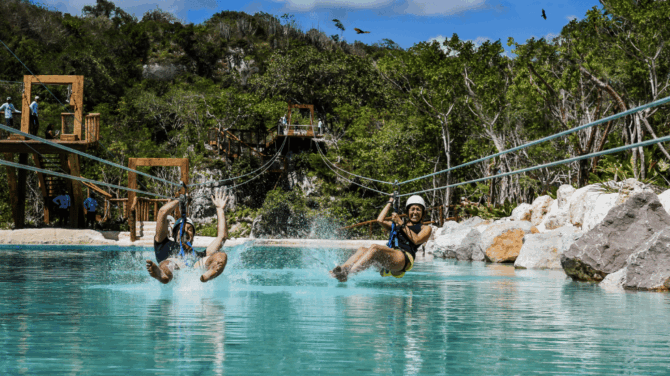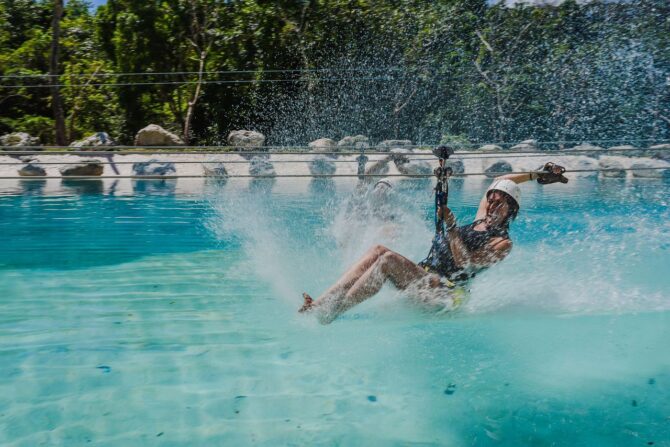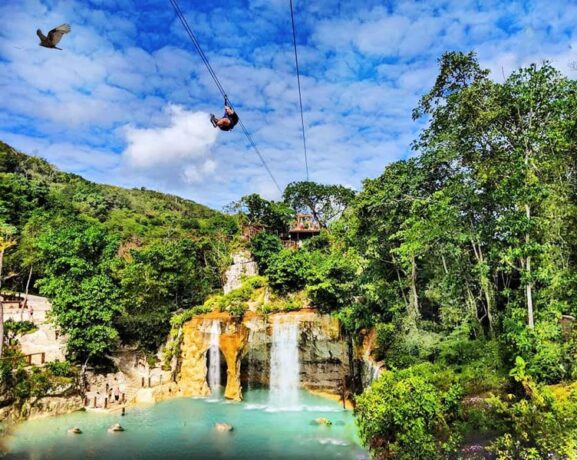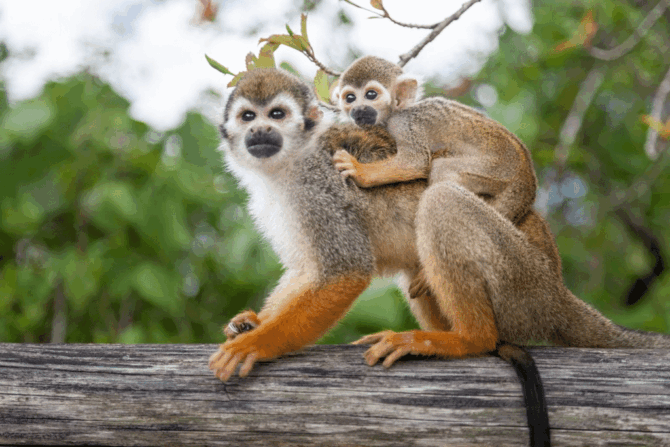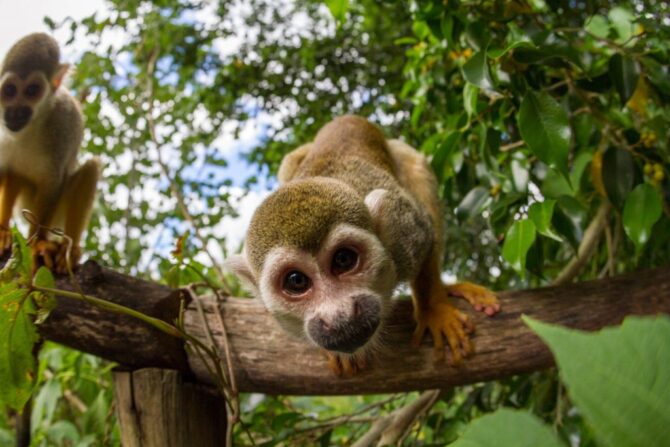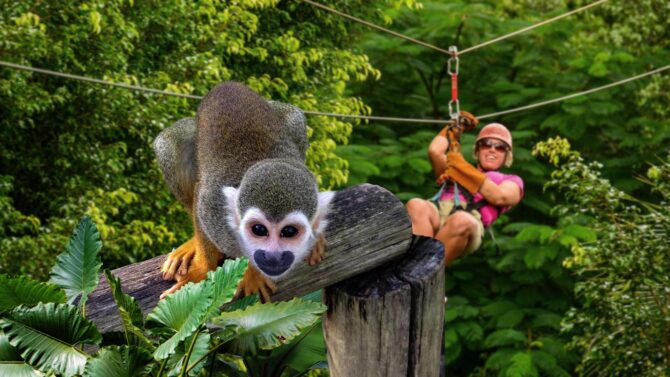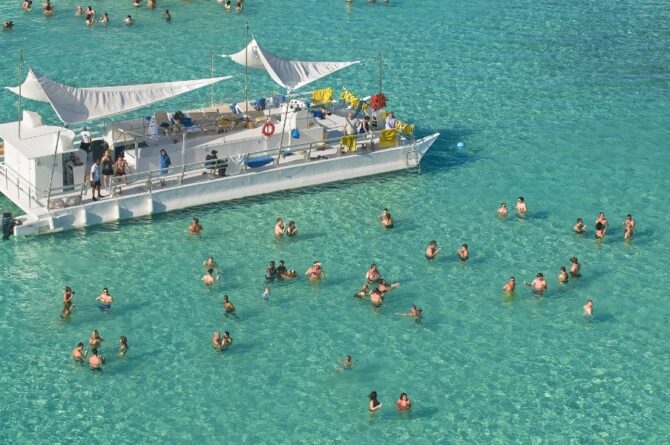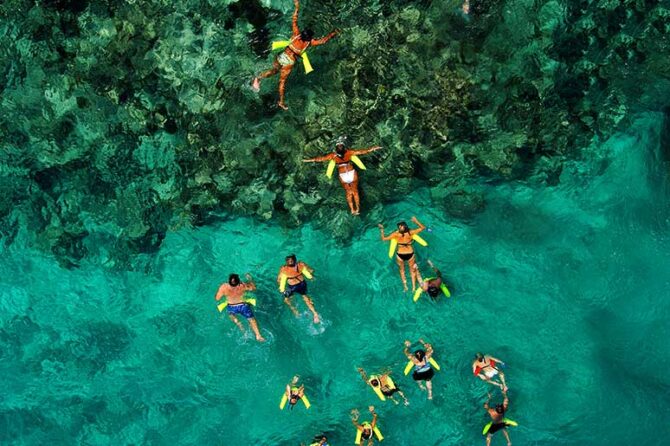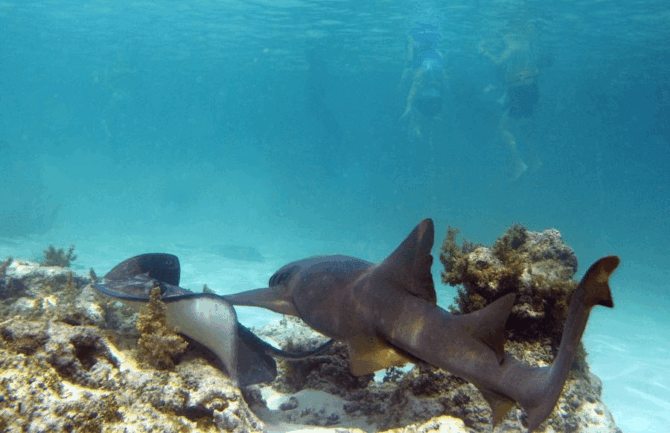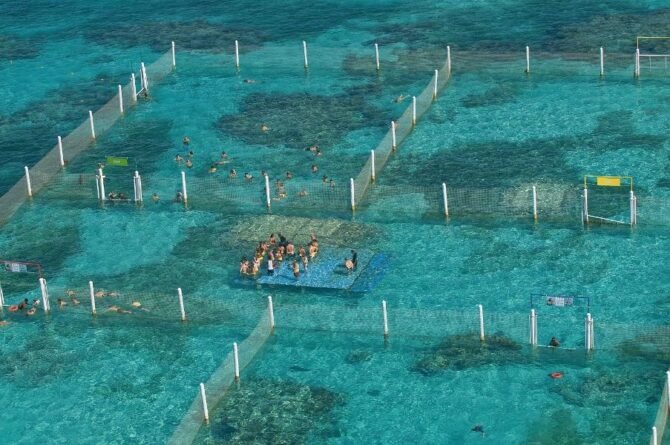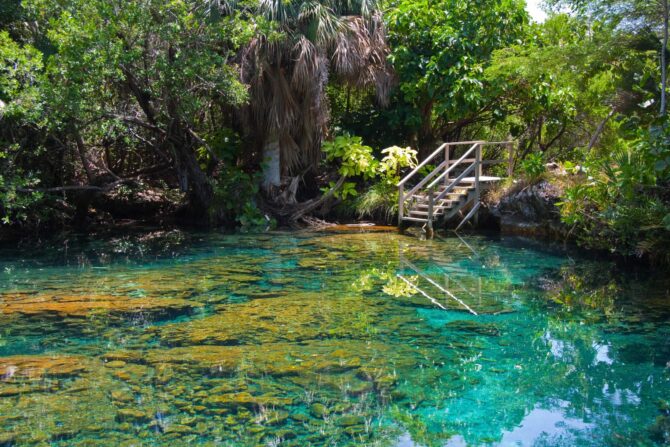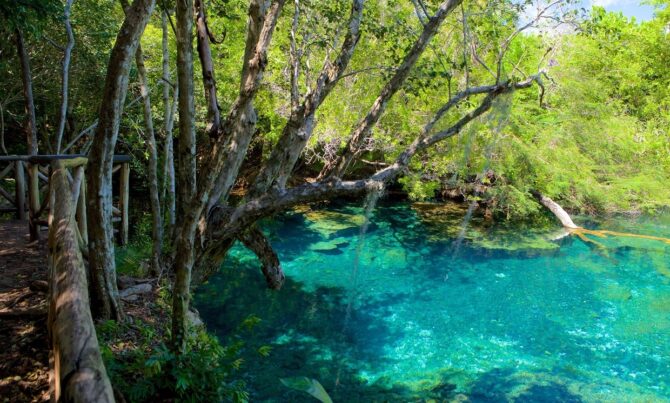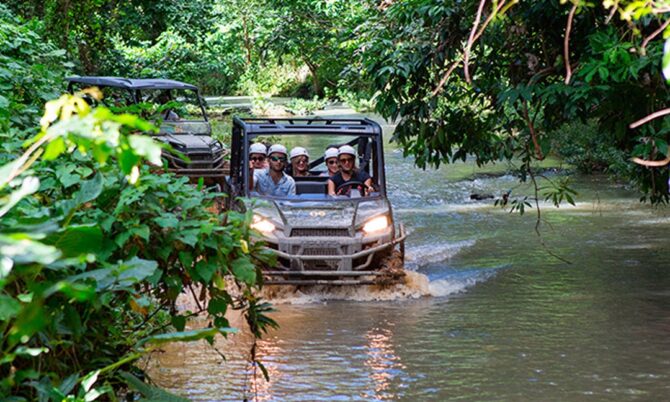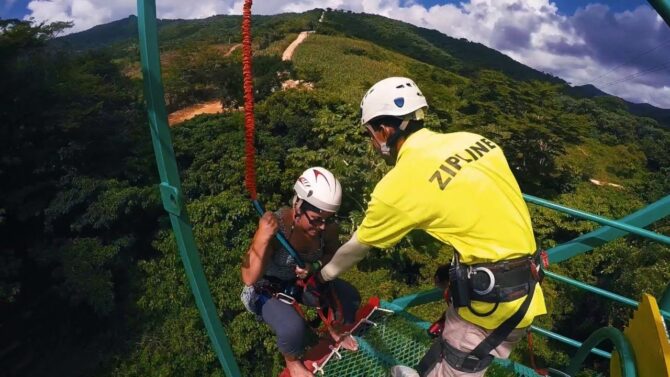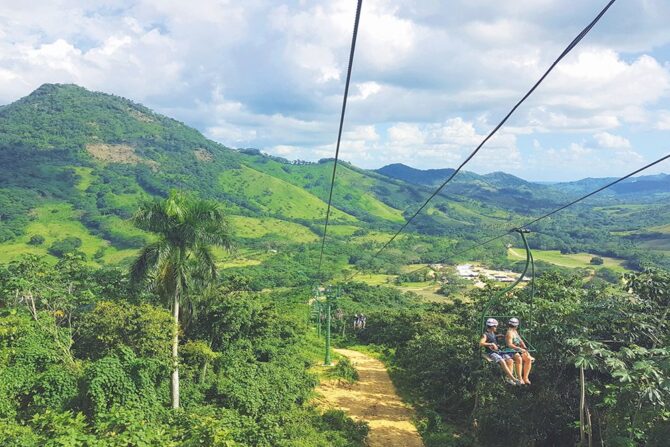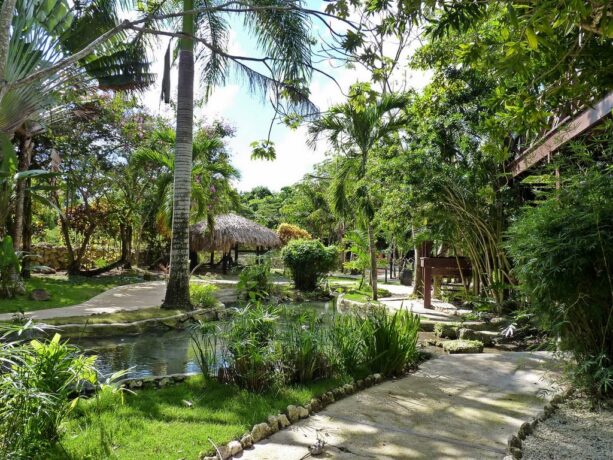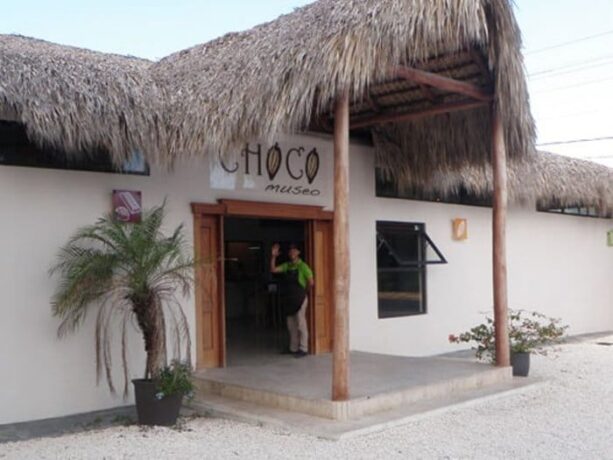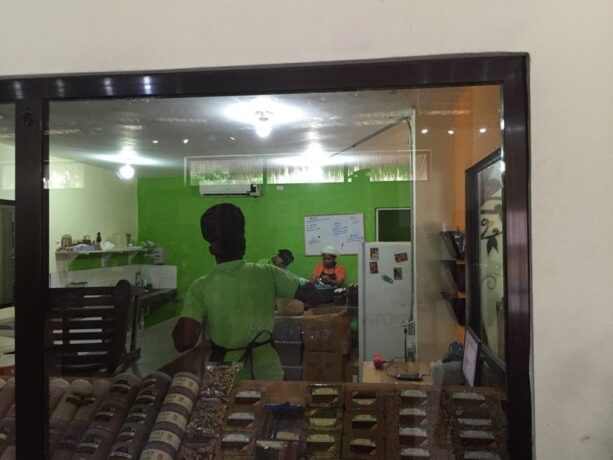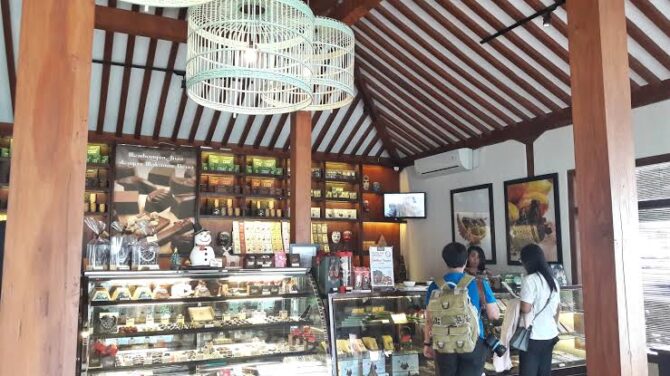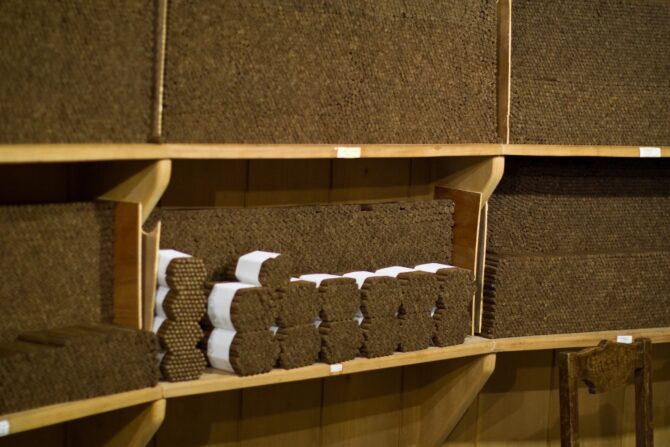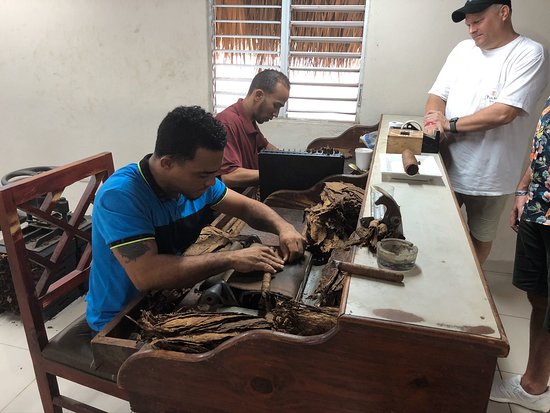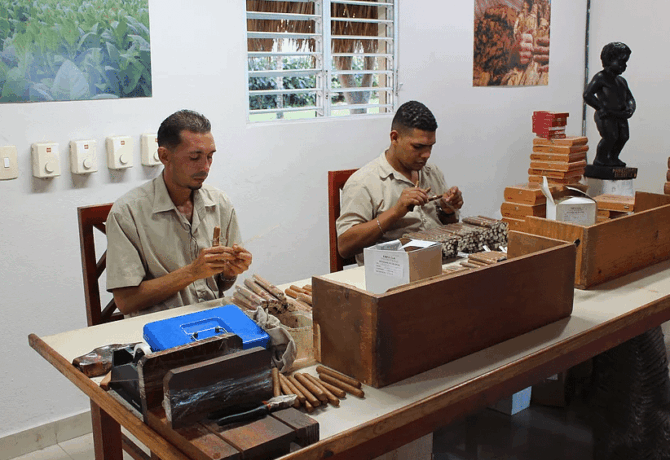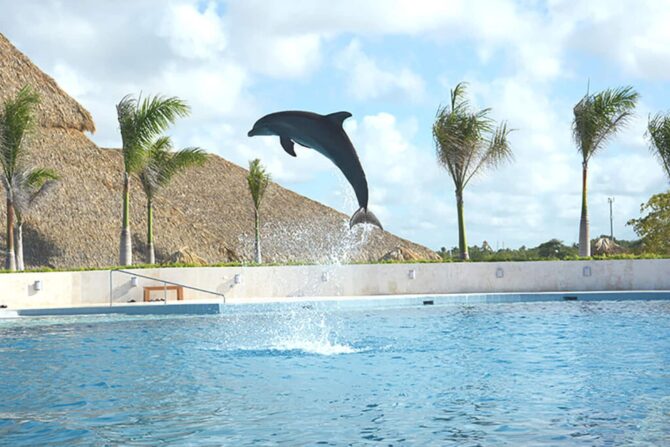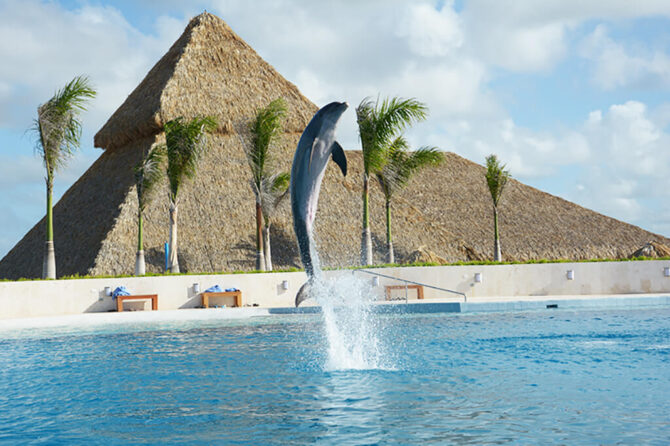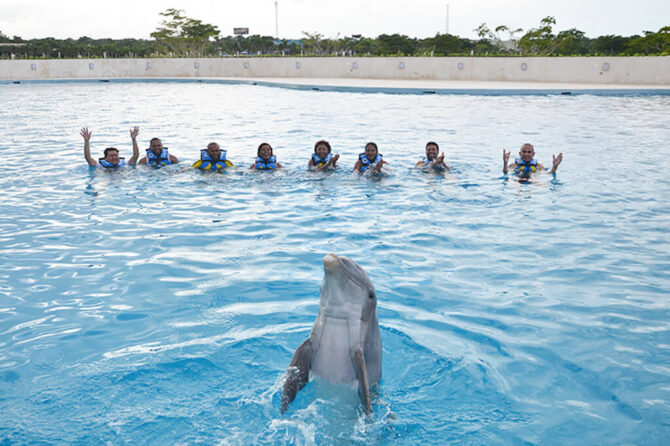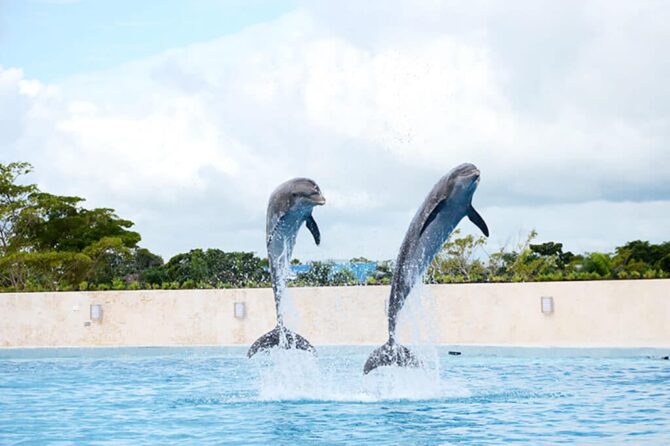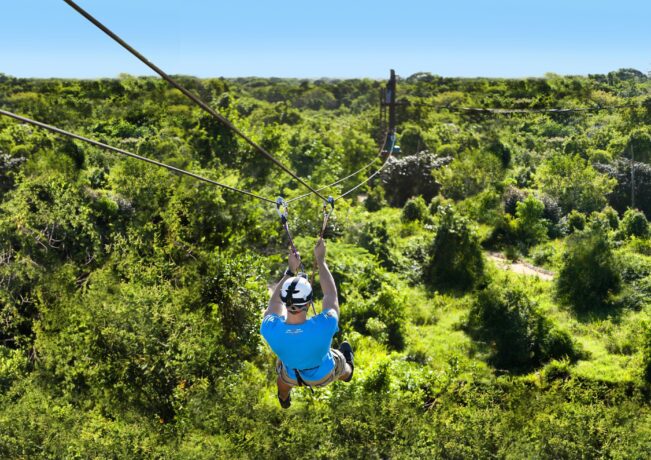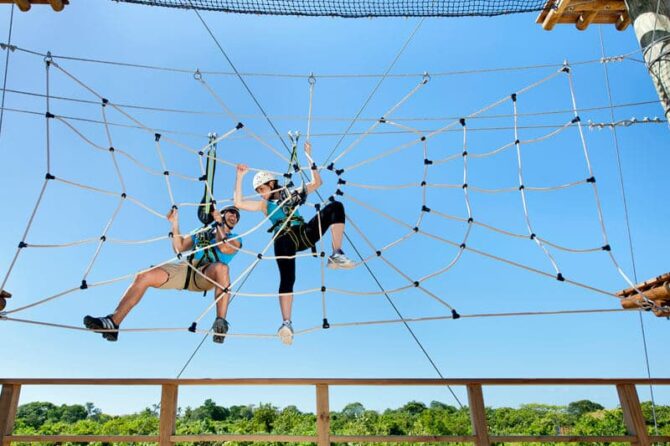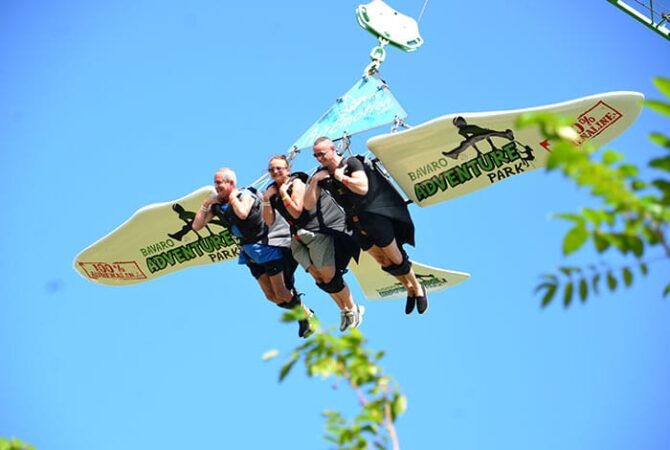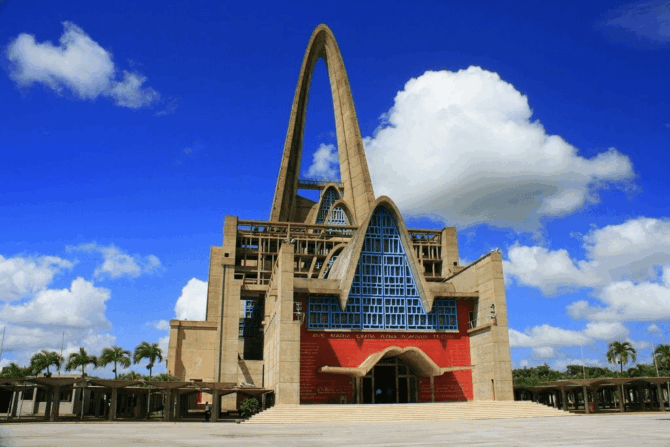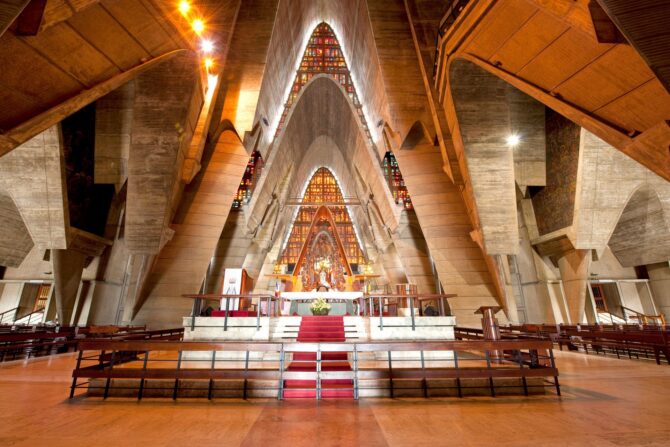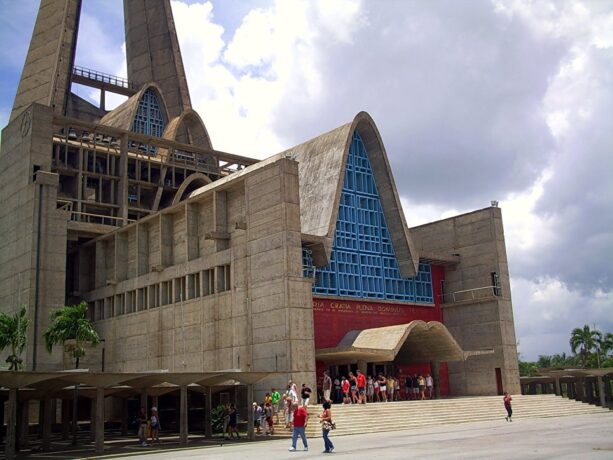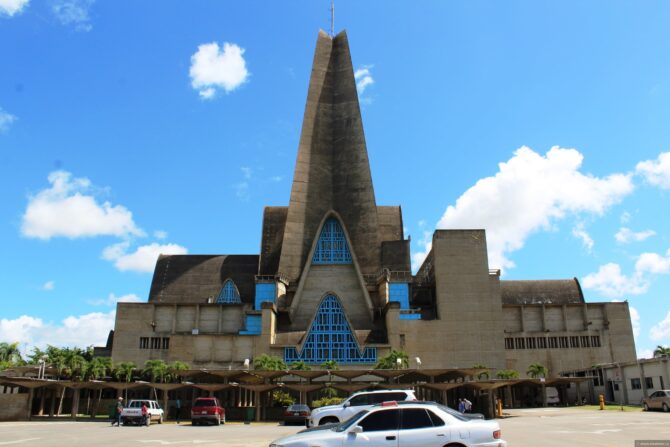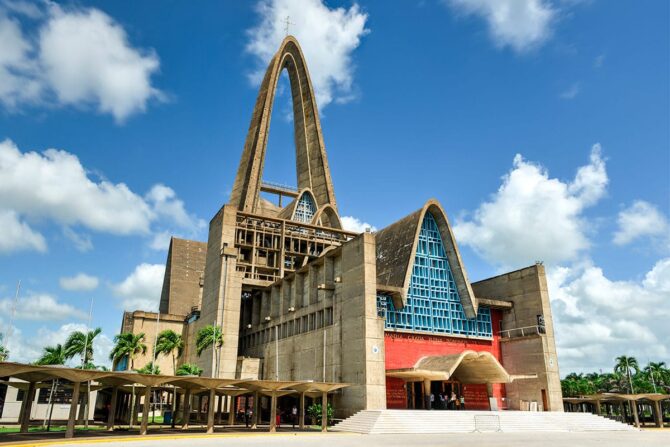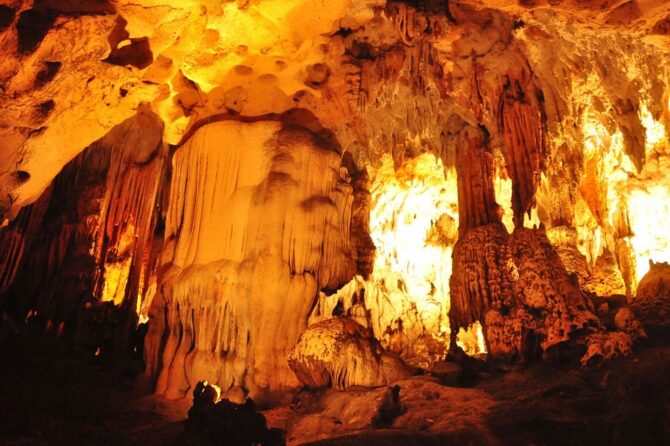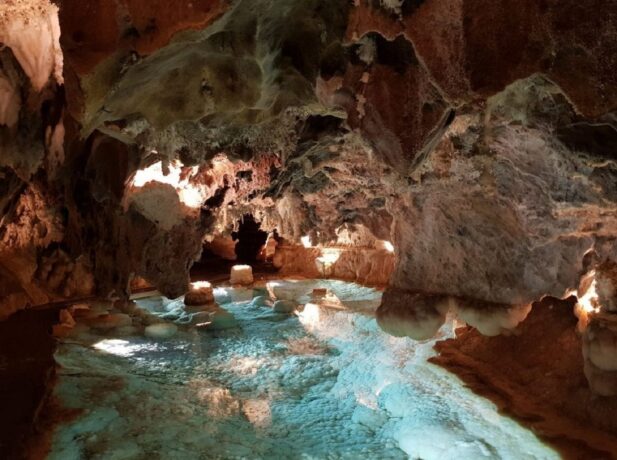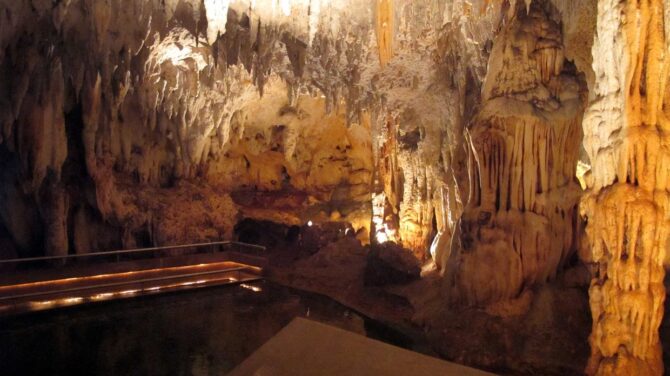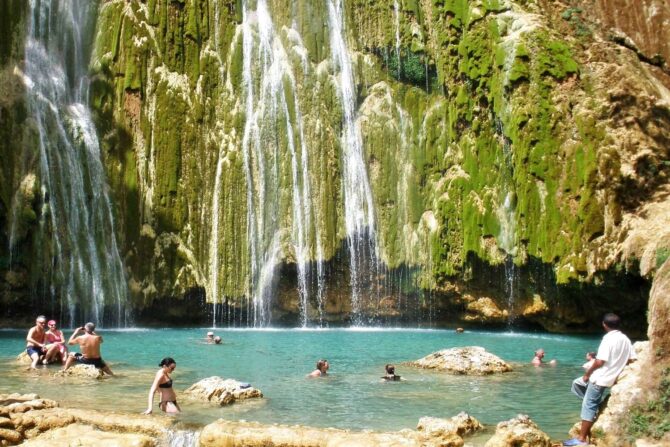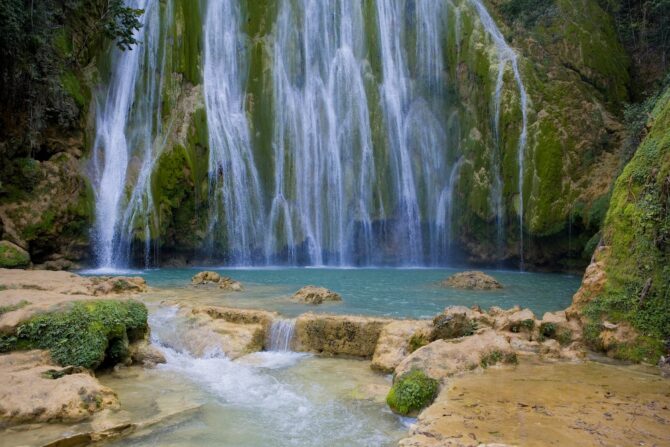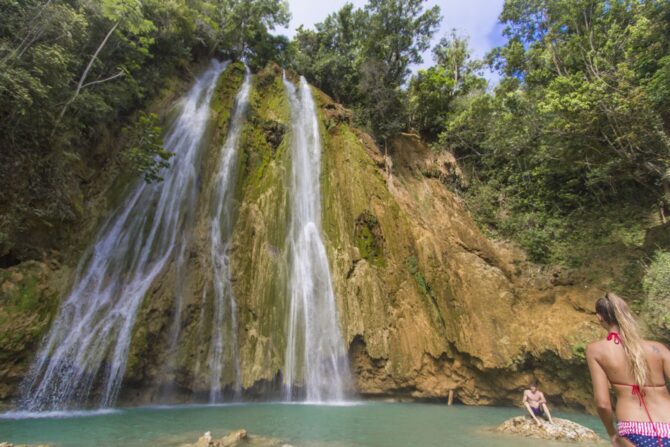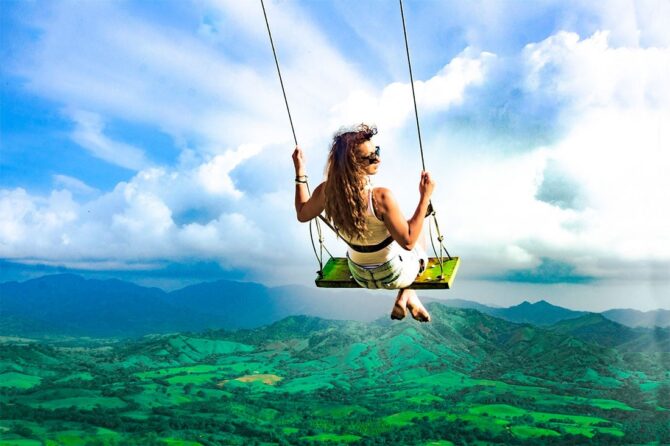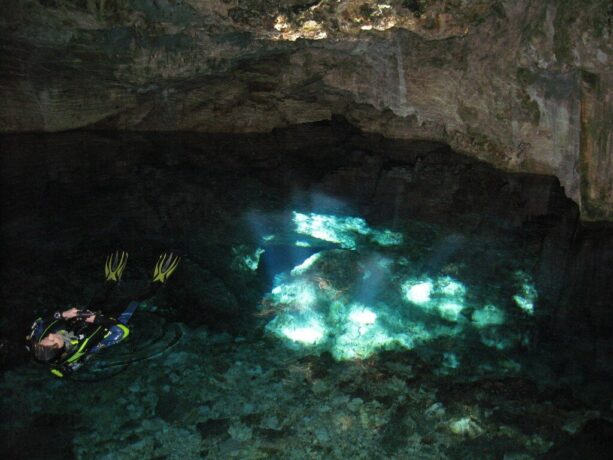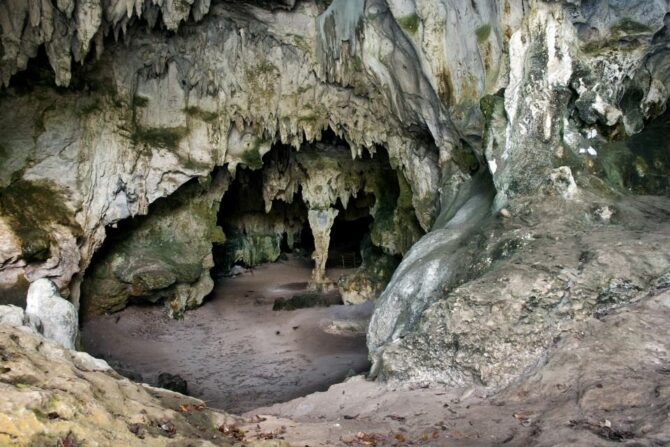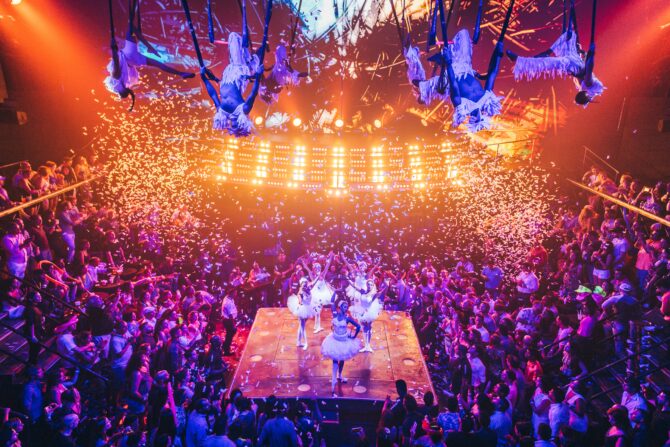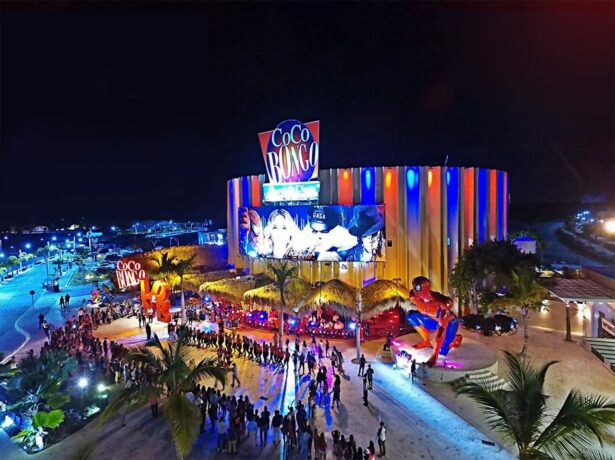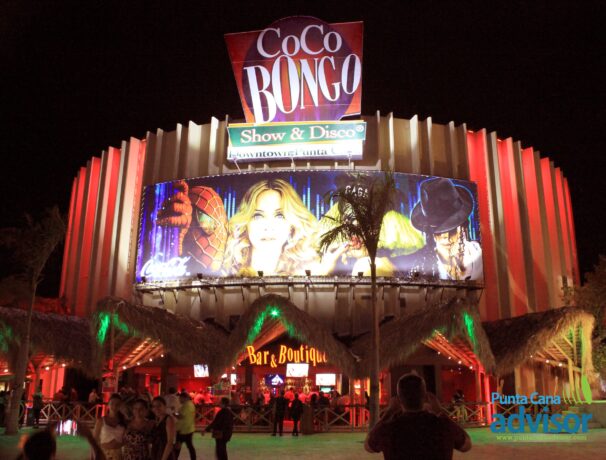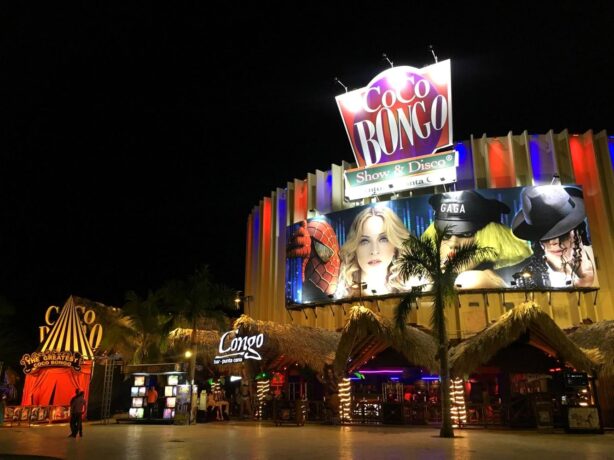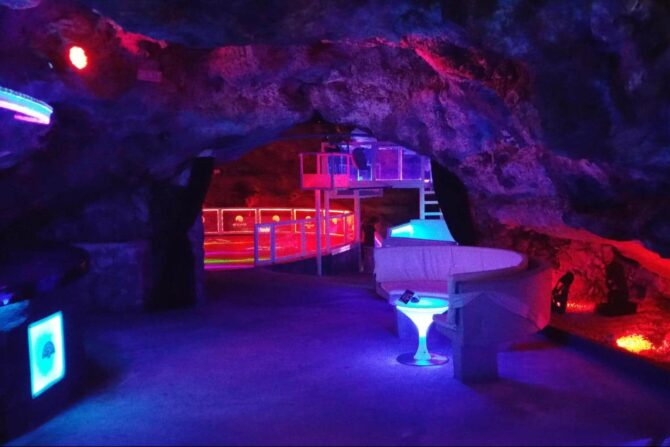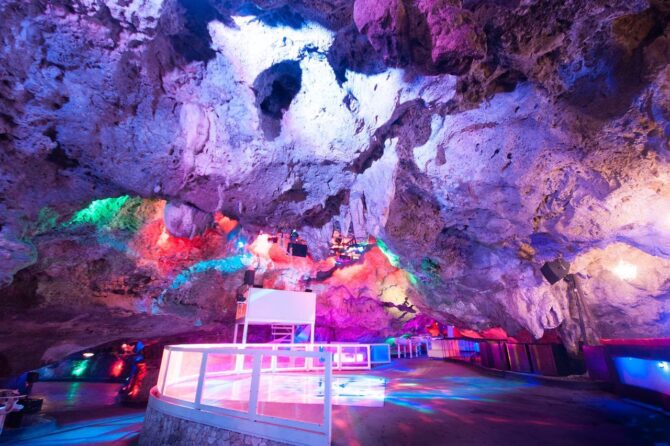Among the resort areas of the Dominican Republic, Punta Cana is considered the place most in demand among foreign tourists. Punta Cana is both the name of a small city, where about 44 thousand people of the permanent population live, and a region covering an area of 375 square kilometers. km. The popular resort area is visited annually by 2.4 to 3.6 million foreign tourists.
Punta Cana: What attracts travelers?
The climate of the Dominican Republic is characterized as tropical with a high level of humidity. Throughout the year in Punta Cana and throughout the resort area there is hot weather. In summer and september, the air warms up from + 29.8 to + 30.6, water – from + 27.9 to + 29.0. Winter temperatures are slightly lower. For air – from + 27.2 to + 27.8, for water – from + 26.5 to + 27.1.
Heavy rains, downpours and even hurricanes occur in July (102 mm), August (130.4 mm), October (101.7 mm) and November (117.5 mm). The Punta Cana region attracts numerous tourists with natural and historical sites, as well as a wide range of recreation opportunities:
- a 48-kilometer strip of beaches covered with white sand;
- balneological treatment centers;
- parks: “Manati” (natural) and “Marinarium” (marine);
- horseback riding and hiking;
- trips by buggy – light cars, specially equipped for movement on dunes and off-road;
- safari to three nearby national parks;
- sightseeing tours to Salvaleon de Higuey – the administrative center of the province where Punta Cana is located – including acquaintance with local historical and religious sites; the city is more often called in abbreviated form – Higuey;
- nightclubs and casinos available for guests of the resort area;
- restaurants serving Dominican dishes combining European, Latin American and Asian traditions;
- water activities: snorkeling, snorkeling, scuba diving, motor boating, catamaran cruises, windsurfing, swimming with dolphins.
Punta Cana is located in the place where the waters of the Atlantic Ocean and the Caribbean Sea converge. The center of the picturesque resort is located 194 km east of Santo Domingo. Tourists come to the region for entertainment, acquaintance with Dominican cuisine, relaxing on local sandy beaches and visiting objects of interest to lovers of history and nature.
- 1 Attractions Punta Cana on map
- 2 Cape Park
- 3 “Monkey Country”
- 4 «Marinarium»
- 5 Indigenous Eyes Eco Park
- 6 La Hacienda Park
- 7 Manati Park
- 8 Chocolate Museum
- 9 Don Lucas Cigar Factory
- 10 Dolphinarium
- 11 Bavaro Adventure Park
- 12 Basilica of Our Lady of Altagracia
- 13 Cave of Wonders
- 14 El Limon Waterfall
- 15 Mount Redonda
- 16 Taino Cave
- 17 Club “Coco Bongo”
- 18 Imagine Punta Cana Club
Attractions Punta Cana on map
Cape Park
Lovers of outdoor activities will certainly be satisfied after visiting Scape Park. This is the name of the theme park located in Cap Cana – a new resort area – 16.2 km southwest of Punta Cana. The name Scape can be translated as “escape”. This is quite consistent with the concept of the park, offering guests an active holiday away from the cities surrounded by tropical nature. Scape Park will surprise visitors with a wide range of exciting activities:
- ziplining – downhill on strong double cables; in the park on the slope of a steep cliff, 112 platforms are equipped, from where guests who are attached by a harness to metal ropes start; descent occurs above the surface of tropical thickets and reservoirs; instructors help in mastering the safety rules; 8 cables are available for visitors;
- swimming in a karst lake;
- visiting the ranch, where tourists are happy to ride obedient horses;
- boat trip to three islands: parrots, iguanas and monkeys;
- exploration of the cave;
- excursion along the route of cultural heritage; travelers inspect copies of ancient structures stylized as houses built in the past by African slaves, Taino Indians, Spanish conquistadors and Dominican peasants.
The theme park can be reached via a shuttle service specially organised by Scape Park. Independent tourists go by car on the roads: Carr. Aeropuerto and Carr. Cap Cana. Approaching the Green Village Hotel, you need to turn right and continue to the theme park.
Scape Park accepts guests from 7:30 am to 9:30 pm daily. The ticket price for adults is $ 129, for children from 6 to 12 years old – $ 69. The most favorable period for visiting Cape Park is March, April and winter.
Address: Cap Cana, 23203.
Website: https://www.scapepark.com/
“Monkey Country”
About 52 km northwest of the center of Punta Cana is Monkeyland – a monkey nursery, occupying an area of 20.234 thousand square meters. m In the protected area there are two families of primates belonging to a rare species of squirrel saimiri. For 20 prehensile-tailed monkeys, the staff of the institution created conditions close to natural.
To visit the amazing Monkeyland, tourists participate in exciting jeep safaris organized in Punta Cana. During a trip to the territory of the “Land of Monkeys”, guests take pictures of animals, feed them and carefully listen to guides talking about primates. Visitors are treated to hot chocolate or coffee.
Monkey Country welcomes guests from 8 a.m. to 5 p.m. The cost of the event is from $ 79 for adults and $ 50 for minor visitors. The route from Punta Cana to Monkeyland follows the Autop highway. del Coral. When crossing road number 4, turn north and continue through the city of Higuey to the “Land of the Monkeys”.
Address: Higuey, Monkeyland.
Website: https://www.runnersadventures.com/tours/monkeyland/
«Marinarium»
Between the two famous resorts – Bavaro and Punta Cana – there is a unique marine park. The place from where excursions go to the territory of the “Marinarium” – the so-called protected area, occupying an area of 40 thousand square meters. m – is located 15 km northeast of Punta Cana. Events are organized on comfortable double-deck catamarans.
Excursions will become a vivid memory for travelers interested in the life of the inhabitants of the oceans and seas. During the walk, tourists will find several exciting and informative activities:
- a trip on a catamaran to the marine park;
- observation through the glass part of the deck for fish living in the ocean;
- snorkeling in a natural pool with nurse sharks (also known as baleen sharks) and spike-tailed rays;
- a fun disco on the deck of a catamaran.
Tourists get to the territory of the marine park as part of excursions. The duration of the event is 3.5 hours. The morning excursion starts at 9:00 and ends at 12:30, the afternoon – at 13:30 and 17:00, respectively. The cost for an adult participant is $ 106, for children from 2 to 12 years old – $ 53. It is best to come here in dry and warm weather in winter or early spring.
To get independently from Punta Cana to the place from where excursions are organized, it is necessary to move along the Blvd road. Turistico del Este (105). At the intersection with Carretera de Toro, turn right and continue along this highway.
Address of the office of the travel company organizing excursions: Carr. Cabeza de Toro, Punta Cana 23000.
Website: https://marinariumparks.com/
Indigenous Eyes Eco Park
“Natural eyes” – this is how you can translate the name of the ecological reserve, located on the southern outskirts of Punta Cana. The distance from the resort center to the eco-park is 6.1 km. Indigenous Eyes, which covers an area whiter than 600 hectares, was created by La Fundacion Grup Puntacana in the 2010s to protect the local flora and fauna.
More than 500 species of plants are protected in the eco-park. Of these, about 36% are endemic shrubs and trees found only in the Dominican Republic. The eco-park is home to over 100 species of birds. The decoration of the protected area is 12 picturesque lagoons.
Many nature researchers believe that Indigenous Eyes are so romantically named precisely because of these bodies of water. Tourists come to the ecological reserve to see the unique local nature during hiking:
- orchards;
- iguana habitats;
- animals and birds of the contact zoo;
- dense thickets of vines;
- rare subtropical plants.
The duration of a walk on Indigenous Eyes is from 3 hours. November, the winter months and the first half of spring are the most suitable period for exploring the eco-park. The ticket price is from $ 50. For guests of some hotels located in Punta Cana, admission is free.
The way from Punta Cana to the eco-park passes along the Turistica road, passing into Blvd. del Mar.
Address: Av. Abraham Lincoln, 960, Punta Cana 23000.
Web page: https://puntacana.org/en/medio-ambiente/reserva-ecologica-ojos-indigenas
La Hacienda Park
Passionate fans of outdoor activities surrounded by jungle will enjoy a visit to La Hacienda Park. The natural park is located 55 km northwest of Punta Cana. Near La Hacienda rises Mount Anamouya, densely covered with green shrubs and trees. There are several interesting activities available for guests:
- jeep safari on roads and trails passing through subtropical thickets;
- descents on five high-speed cables stretched at an altitude of 160 m;
- a journey along the 750-meter cable car over the jungle and sugar cane plantations;
- walks on obedient horses, characterized by a meek character;
- jeep and buggy rides on loose sand dunes;
- acquaintance with original Dominican dishes in the restaurant of the park.
Tourists come to La Hacienda Park throughout the year. The largest flow of travelers is noted in winter and early spring. The cost of visiting for one tourist is $ 99. There are no special prices for children. La Hacienda Park welcomes guests from 8 a.m. to 4 p.m. daily. Transfers from punta Cana hotels start at 7:00 or 9:00.
Tourists-motorists get on the highway Autop. del Coral to the junction with road number 105. After that, you need to turn right and continue to the park through the city of Higuey.
Address: Avda. Estados Unidas, S/N, Punta Cana 23000.
Website: https://lahaciendapark.com/
Manati Park
One of the most interesting places for young tourists and their parents is Manati Park, located 15.7 km northwest of Punta Cana. This corner of nature performs two functions: an entertainment center and a zoo. Manati Park first opened its doors to visitors in 1996 and now there are over 150 species of animals, plants and birds.
In the park “Manati” visitors get acquainted with the daily life of birds and animals, as well as have an interesting and fun time. Guests can become spectators of five performances with the participation of talented artists:
- parrots and other tropical birds;
- savvy dolphins;
- graceful horses;
- agile sea lions;
- dancers and musicians dressed in the costumes of the Taino Indians, who were the indigenous population of South America before the arrival of european colonizers.
The park welcomes guests daily from 9 a.m. to 6 p.m. Almost every hotel located in Punta Cana organizes excursions to Manati Park. The cost of a single ticket for all five performances for children is $ 20, for adults – $ 35. A swimming session with dolphins, lasting 20 minutes, will cost each guest $ 125.
Tourists come to the park daily, regardless of the season. Motorists get from Punta Cana on the Blvd road. Turistico del Este. Near Downtown Punta Cana , the entertainment center – you need to turn right and continue the trip along the Carr road. Higuey–Miches to the park.
Address: Avenida Estados Unidos, S/N, 23001.
Website: https://www.manatipark.com/
Chocolate Museum
A visit to Chocomuseo will be a great gift for sweet lovers of all ages. The Chocolate Museum is located inside Mundo Autentico, a compact shopping mall. For visitors of the institution there are several interesting opportunities:
- inspection of the few exhibits telling about the history of chocolate making and growing cocoa beans in the Dominican Republic;
- participation in master classes;
- tasting of different varieties of drink: black, milk and white chocolate with the addition of fillers that differ in taste.
Master classes help visitors to master basic skills and abilities in making chocolate. The duration of the event is up to 2 hours. If desired, you can purchase sets of cocoa powder for self-preparation of chocolate. The museum is open to the public from 9:00 to 18:00. Admission is free.
Most tourists visit the museum daily as part of excursions. If you wish, you can get there on your own from Punta Cana on the Blvd road. Turistico del Este.
Address: Av. Barcelo, Punta Cana 23000.
Don Lucas Cigar Factory
The Dominican Republic, like other Latin American countries, is famous for the production of cigars. In 1990, Philippe Gillette rested in Punta Cana, who owned the initiative to create a small factory in the resort region. The cigar factory, named after Don Lucas, was founded by an entrepreneur in 1992, when two workers worked here. Now, in 2022, the number of employees has reached 45 people.
Cigars are twisted by hand. There is no conveyor or special machines. The cigar factory is open to tourists. Access is free. If desired, you can purchase the products of the enterprise, where 150 cigars of 14 types are produced daily. A qualified employee will tell in detail about all stages of the product manufacturing process.
The Don Lucas cigar factory is located in the same building as the Chocolate Museum. Curious travelers come here daily as part of excursions. The path along the road exactly repeats the route to Chocomuseo described above.
The address is the same as that of the Chocolate Museum.
Cigar Factory website: https://www.donlucascigars.com.do/
Dolphinarium
Marine animals are among the most mysterious creatures among mammals. This can be seen by visiting Dolphin Discovery – an entertainment and research center where 34 dolphins live. Dolphin Discovery is located about 800 m northeast of the Don Lucas cigar factory and 11 km north of the center of Punta Cana.
Depending on the duration, three options for swimming with smart marine animals are offered for guests of the dolphinarium: 60, 50 and 40 minutes. The dolphinarium has a restaurant and a bar. Dolphin Discovery doors are open daily, excluding Mondays, from 9 a.m. to 4 p.m. Tourists come here, regardless of the weather conditions. From the centre of Punta Cana, the Dolphinarium can be reached via the Blvd route. Turistico del Este.
Address: Carr. de Veron, Bavaro, La Altagracia, Higuey Town, 23301.
Bavaro Adventure Park
In 2011, 7.5 km north of the center of Punta Cana, Bavaro Adventure Park opened to visitors. Now the Bavaro Adventure Park, the total area of which is 44 hectares, is considered the largest in the Dominican Republic among such institutions. In spring, winter and late autumn, the largest number of tourists accumulate here. There are 15 attractions available for guests of the park. Among them, a group of the most popular adventures stands out:
- descent down the hill in zorbs – large translucent balls;
- trampoline jumping;
- rafting on a mountain river in inflatable circles and swimming in a lake formed by a waterfall;
- playing paintball at two venues;
- mountain biking;
- eco tour on Segway off-road;
- descent on several metal cables; the route includes five stages;
- a visit to the dinosaur park, where you can see the figures of 20 ancient lizards;
- simulation of flights on a special attraction Sky Diver; participants rise to a height of 20 m.
The adventure park welcomes guests daily from 8:30 a.m. to 6 p.m. The cost of the package of events – from 88 $. Details can be found on the official website of the park. Employees use English and Spanish in their work. Among the staff there are those who speak German, Russian and French quite well.
The park can be reached via Highway 105.
Address: Blvd. Turistico del Este 8.5 km, Bavaro.
Website: https://bavaroadventurepark.com/
Basilica of Our Lady of Altagracia
The most famous sacred structures of the Dominican Republic include the Cathedral, located 47 km east of Punta Cana in the city of Higuey. The building has the status of a minor basilica and bears the name of Our Lady of Altagracia, which can be translated as “Supreme Grace”. The history of the Cathedral includes several stages:
- 1947 – development of the project for the construction of the temple;
- January 21, 1952 – the day when the first stone was laid;
- 1960 – the first stage of construction was completed;
- January 1971 – worship services began;
- August 1977 – completion of construction.
The building of the cathedral was erected according to the project of P. Dupré and A. J. Dunoir de Segonzak – French architects. The stone Roman Catholic church of gray color is decorated with a high 69-meter arch. The lower part of the façade is painted with red paint. The gates are decorated with bronze and gold. The belfry of the cathedral is equipped with 45 bells.
The spacious inner hall is decorated with many colorful stained glass windows and bright frescoes. The temple houses an icon of the Virgin Mary, painted in the XVI century. The cathedral is open to the public on weekdays from 7 a.m. to 7 p.m. On weekends, the temple is available from 6:30 to 17:00. The cathedral accepts donations.
In the summer of 2012, a museum was opened at the basilica. The exhibits of the cultural institution tell about the history of Christianity in the Dominican Republic. Here are collected paintings on religious themes. The authors of the paintings are Dominican artists.
The basilica is located in one of the central quarters of Higuey. From Punta Cana, tourists take the Autop motorway. del Coral to the junction with road number 4. Turning right, continue to Higuey.
Address: Av. Arzobispo Adolfo A. Nouel s/n Higuey 23000.
Website: https://basilicadehiguey.do/
Cave of Wonders
Cueva de las Maravillas (Cueva de las Maravillas) – this is the name of the natural object in Spanish. The Cave of Wonders, located 96.5 km east of Punta Cana, was discovered in 1926. Locals called these natural underground corridors the Jaguar Cave.
The situation changed in 1949, when it was possible to discover unique images inside the cave. This was made possible by Professor F. A. Richez. In the summer of 1997, Cueva de las Maravillas, together with the surrounding area, received the status of a national park. In 2003, after many years of construction work, the cave became available to the public.
The depth of the natural object is 25 m, the length is about 800 m. About a third of the corridors of the Cave of Wonders are accessible to tourists. Thanks to bridges, lighting, observation platforms and paths, on the inner stone walls you can see in all its glory unique works created by the Taino Indians 500-1000 years ago:
- 19 petroglyphs – images embossed and applied in red and black paint on the rock;
- 472 pictoraf (pictograms) – signs that schematically reproduce geometric shapes, faces of people, objects and animals.
The Cave of Wonders is available for visits daily from 9:00 to 16:00. The ticket price is 100 pesos, for children – 50 pesos. Tourists reach the cave from Punta Cana by Autop. del Coral, which turns into the Autovia del Este motorway. It is important not to miss the right turn and follow the signs. Not far from the cave there is a small airfield serving domestic flights.
Tourists come here in any season. Weather has little effect on the flow of travelers.
Address of the Cave of Wonders: Carr. La Romana–San Pedro de Macoris, 16 km.
Website: https://cuevadelasmaravillas.com.do/
El Limon Waterfall
Tourists vacationing in the Dominican Republic should certainly pay attention to other natural sites of the country. About 300 km northwest of Punta Cana, if you move along the road, there is a waterfall with an interesting name El Limon. The cascade falls from a height of 56 m (according to other sources – 55 m). According to this indicator, El Limon is the third waterfall in the Dominican Republic.
The name of the cascade is explained very simply. Water at certain times of the day acquires a yellowish-green color. It is best to come here during the rainy season. However, a long way and showers can spoil the impression of an interesting natural object. Therefore, experienced tourists consider December the most suitable month to take a walk to El Limon.
The waterfall can be reached on horseback on mules or horses. The trip usually starts at the nearby Ranch Espanyol or in the village of El Limon. The cost of the service is from $ 20. Traditionally, tourists leave the conductor $ 10 as a tip. Along the way, travelers meet a variety of objects:
- subtropical plants;
- bananas;
- shrubs;
- fruit trees;
- pineapples;
- royal palm trees;
- endemic species of birds: broad-billed todi, Haitian melanerpes and others.
Entrance tickets begin to sell at 8 am, end – at 4 or 5 in the afternoon. If you leave the car in the parking lot adjacent to the waterfall, you will have to pay 100 pesos. It is better to go to El Limon early in the morning, while the horses and mules feel cheerful. Motorists reach the Ranch of Hispaniol via a route that includes five roads, turning one into another:
- del Coral;
- Autovia del Este;
- Melle;
- Juan Pablo I;
- Nagua–Samana.
Mount Redonda
Lovers of subtropical nature and beautiful landscapes should go northwest from Punta Cana. Not far from the ocean coast rises a 350-meter mountain, well known to tourists. Redonda attracts travelers with magnificent views that open from a relatively flat peak:
- to an ocean that seems infinite;
- numerous green hills;
- mountains visible in the distance;
- winding roads and motorways;
- nearby settlements.
For travelers, benches and hammocks are installed at the top. There are also several swings. Tourists call them winged or celestial. Travelers tend to get to Redonda for the sake of photographs. Especially impressive are the works of professional photographers who offer their services directly at the top.
The mountain can be reached as part of excursions or independently. However, climbing to the top in a rented car is prohibited. Therefore, tourists need to use the services of pickup or truck drivers. Hiking is possible only for physically trained travelers.
The mountain is available for visits at any time. Most travelers come here in the dry season. The cost of truck and pickup truck drivers is 100 pesos. The price of excursions offered by travel companies in Punta Cana is from $ 50. The cost of services of professional photographers – from $ 75.
The distance from Punta Cana to Redonda Mountain is 88 km. The path goes by motorways: Blvds. Turistico del Este and RD-104 Carr. Bavaro–Miches. At the Hacienda Reyna Hotel, turn right and continue towards the mountain.
Address: El Cedro de Miches 24000.
Website: https://montanaredonda.com/
Taino Cave
About 6.5 km south of Macau Beach is the Taino Cave, named after a tribe of Indians. To get to this place from Punta Cana, you have to overcome a distance of 40 km. The cave is more often called Macau after the beach and the city located next door. These places have long been chosen by fans of buggy tours.
Little reliable facts are known about the history of the Taino Cave. However, tourists come here not to study the distant past of the object, but to see the underground lake with their own eyes. Divers have also become frequent guests of this place. The depth of the cave is from 5 to 10 m. The walls of the tunnels are decorated with clusters of unusually shaped stalagmites and stalactites. Divers are happy to dive into the clear lake. Visibility in the reservoir reaches a depth of up to 20 m.
Access to the cave is free and open daily from 7:30 to 15:00. Tourists come here both in summer and in winter. Most travelers get there as part of excursions. To get to the Taino Cave from Punta Cana, you need to start the journey along the Turistico del Este road and continue the trip along the Carr. Higuey–Miches. After that, it is important not to miss two left turns: first at the city of El Macau, then at El Salado.
Address: Macao Cave 23000.
Club “Coco Bongo”
The entertainment industry in the resort area offers a wide range of opportunities for young people. “Coco Bongo” is a well-known international network of nightclubs. At the end of 2014, Coco Bongo was opened 11.8 km north of Punta Cana near Dolphin Discovery. The nightclub is known for its vivid performances, including five separate themes:
- Brazilian Carnival;
- heroes of the film “Mask”;
- music of the 1960s in the style of the beatles;
- Las Vegas gambling;
- 300 Spartans from the film of the same name.
Actors, acrobats and gymnasts participate in the performances. Each program is shown for 6 months, after which it is replaced by another show. The performance starts at 23:00. Access for guests is open from 19:00. The doors of the club close at 2 or 3 a.m. Monday and Tuesday are days off at Coco Bongo. The ticket price is from 85 to 165 $.
The path to the club coincides with the route that leads to Dolphin Discovery.
Address: Carr. Barcelo, Esq. El Boulvard, Cruce Coco Loco, Bavaro.
Website: https://www.cocobongo.com/show/punta-cana/?lang=ru
Imagine Punta Cana Club
About 2 km west of Coco Bongo is another popular youth club, Imagin. The full name of the nightclub is Imagine Punta Cana. The club includes three halls, stylized as caves. Music of various directions sounds here – from Latin American to hip-hop. The main hall can accommodate up to 3 thousand people.
Dance parties are held daily. Among the guests of the club are famous Dominican and foreign musicians. Performances and evenings begin at 23:00. The club closes at 3 a.m. The ticket price for one visitor is from 35 to 400 $.
Tourists get here along the same roads that lead to Coco Bongo. After passing the club “Coco Bongo” to Estados Unidas Avenue, you need to turn right and continue to Imagine.
Address: Av. Estados Unidos, Carr. Coco Loco Friusa.
Website: https://imaginepuntacana.com/
Punta Cana – a resort rich in entertainment and interesting places
For travel lovers, the Dominican Republic has long been one of the most interesting destinations. Among the seaside resorts of the country, Punta Cana has gained fame as a city in which you can find a variety of options for an exciting holiday. Excursion programs with visits to natural and historical sites are especially in demand among foreign tourists.
Young people are happy to have fun in local clubs, the musical programs of which are not inferior in quality to Western European institutions of this type. For young tourists, adventure park attractions are available. Punta Cana can be safely called a resort, where every traveler will find an interesting activity to his liking.

